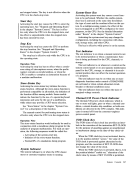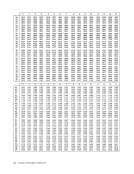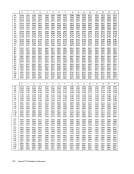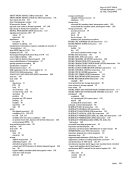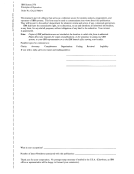or first IDA W following the
The interruption conditions from the channel,
except for CAl, can be accompanied by other chan
nel status indications, but none of the device status
bits is on when the channel initiates the interruption.
The channel available interruption (CAl) condi
tion is provided on all block-multiplexer channels
and causes the entire
set of bits. All fields of the
The
mode and in the
mode contains a zero device address and a channel
address identifying the interrupting channel.
The channel generates the CAl condition only if
it previously had responded with a condition code 2
to an
HALT DEVICE and if the busy condition thus indi
cated no longer exists. When the busy condition
which caused condition code 2 was due to a subchan
nel busy with a device other than the one addressed,
the concluding of the busy condition is not signaled
by a CAl.
(except
CAl, a pending CAl condition is reset upon the oc
currence of any interruption (except
channel.
condition when another interruption condition
(except
channel. The occurrence of another channel-busy
condition prior to the CAl causes the CAl condition
to be suspended until the busy condition is past.
Programming Note
The CAl is designed to inform the program that a
channel which previously indicated busy is no longer
busy. The CAl condition pending in a channel does
not cause the rejection of a subsequent
condition code 1 to be returned to
NEL. The CAl can therefore be used as a tool for
keeping
junction with
responded with condition code 2 because of a chan
nel busy condition does not subsequently respond
with a condition code
out clearing an interruption condition in the interim.
Priority of Interruptions
All requests for
to the activity in the
tions associated with more than one
exist at the same time. The priority among requests
Revised September 1, 1975
By TNL: GN22-0498
is controlled by two types of mechanisms--one es
associated with devices attached to the same chan
nel, and another establishes priority among requests
from different channels. A channel requests an
among requests from its devices. The conditions
responsible for the requests are preserved in the
devices or channels until accepted by the
associated with devices on anyone channel is a
function of the type of channel, the type of interrup
tion condition, and the position of the device on the
not related to its
to conditions associated with the portion of the op
eration in which the channel is involved. These con
ditions include channel end, program-controlled
interruption, HALT
channel, and errors prematurely concluding a chain
of operations. The selector channel cannot handle
any interruption conditions other than those due
As soon as the selector channel has cleared the
interruption conditions associated with data transfer
it starts monitoring devices for attention, control
unit-end, and device-end conditions and for the chan
nel-end condition associated with operations con
cluded by HALT
among requests for interruption is based on response
from devices. The highest priority is assigned to the
device that first identifies itself with an interruption
condition or that requests service for data transfer
and contains the
The assignment of priority among interruption
conditions for a block-multiplexer channel differs
among models.
assign priorities as done by the byte-multiplexer
channel.
appears random.
Except for conditions associated with concluding
of data transfer, the current assignment of priority
for interruption among devices on a channel may be
canceled when
ever the assignment is canceled, the channel resumes
monitoring for interruption conditions and reassigns
the priority on completion of the activity associated
with the
Input/Output Operations 227
























































































































































































































































